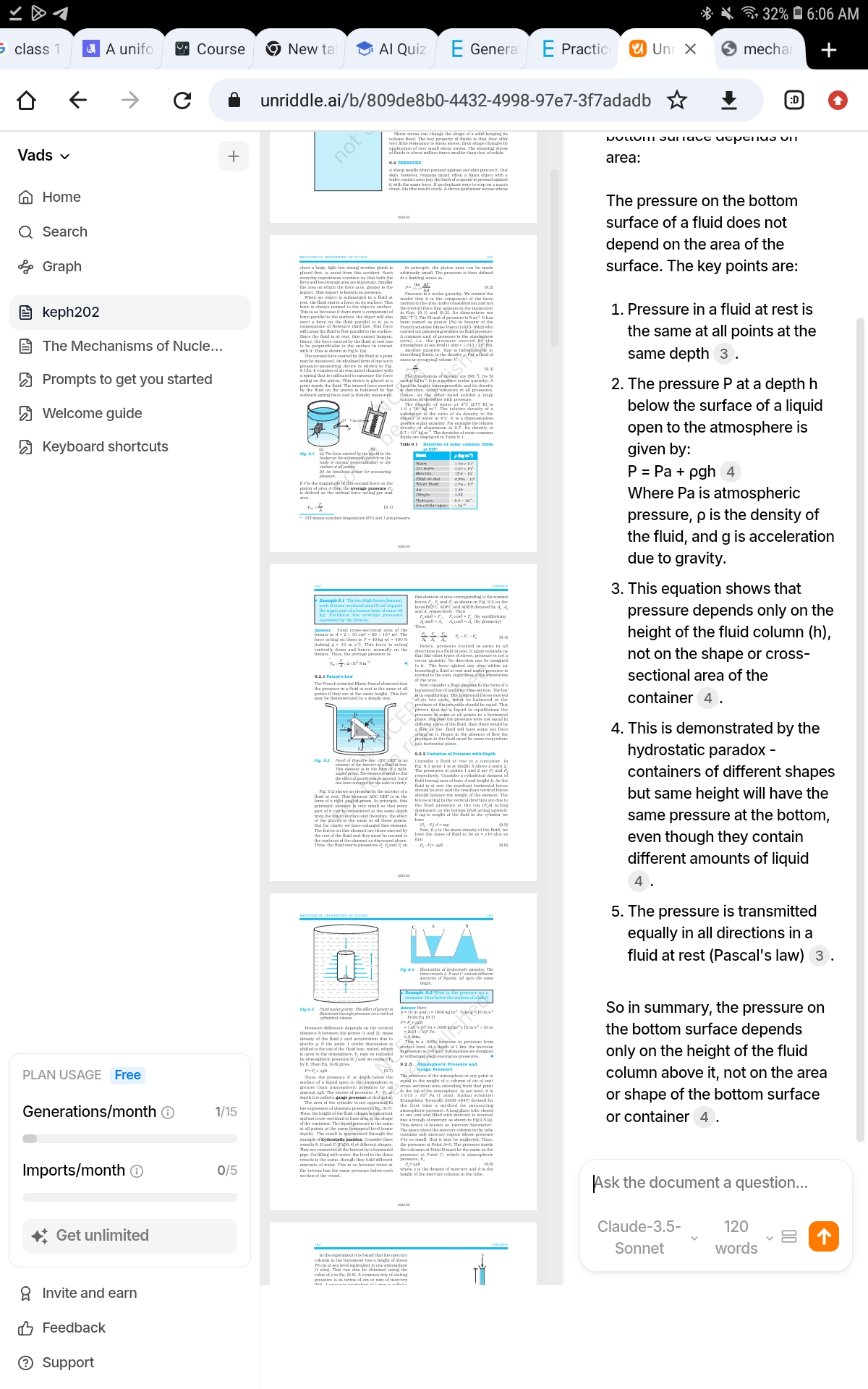What determines the pressure on the bottom surface of a fluid?

Understand the Problem
The text discusses the principles of fluid pressure, emphasizing that the pressure at a certain depth in a fluid depends only on the height of the fluid column above that point, and not on the shape or area of the bottom surface. This is explained through concepts such as Pascal's law and the hydrostatic paradox.
Answer
The pressure at the bottom surface of a fluid is Pa + ρgh.
The pressure at the bottom surface of a fluid is determined by the atmospheric pressure plus the pressure due to the weight of the fluid column above it. This can be calculated using the formula P = Pa + ρgh, where Pa is atmospheric pressure, ρ is the fluid's density, and h is the depth.
Answer for screen readers
The pressure at the bottom surface of a fluid is determined by the atmospheric pressure plus the pressure due to the weight of the fluid column above it. This can be calculated using the formula P = Pa + ρgh, where Pa is atmospheric pressure, ρ is the fluid's density, and h is the depth.
More Information
The pressure at the bottom of a fluid in a container is not affected by the shape or cross-sectional area of the container, but rather by the height of the fluid column above it.
Tips
Common mistakes include not accounting for atmospheric pressure and using incorrect units for depth or density. Ensure all units are consistent for accurate calculations.
Sources
- Fluids, Density, and Pressure - courses.lumenlearning.com
- Variation of Pressure with Depth in a Fluid - courses.lumenlearning.com
- 7.5: Pressure Due to the Weight of Fluid - Physics LibreTexts - phys.libretexts.org